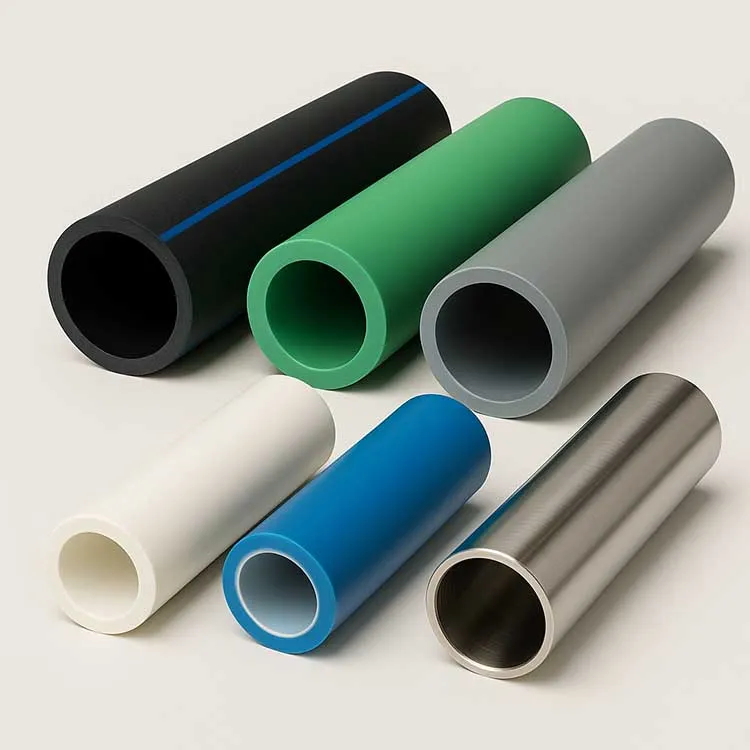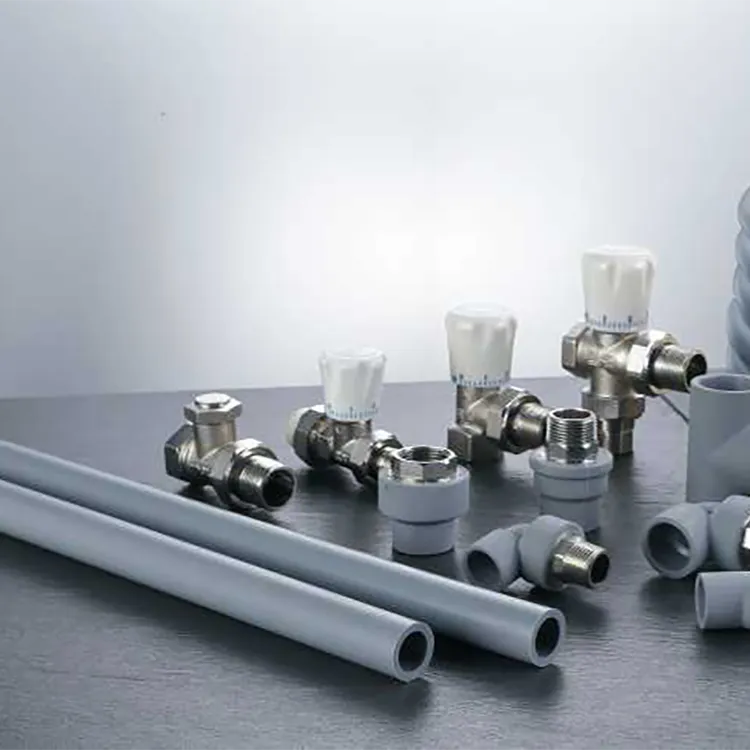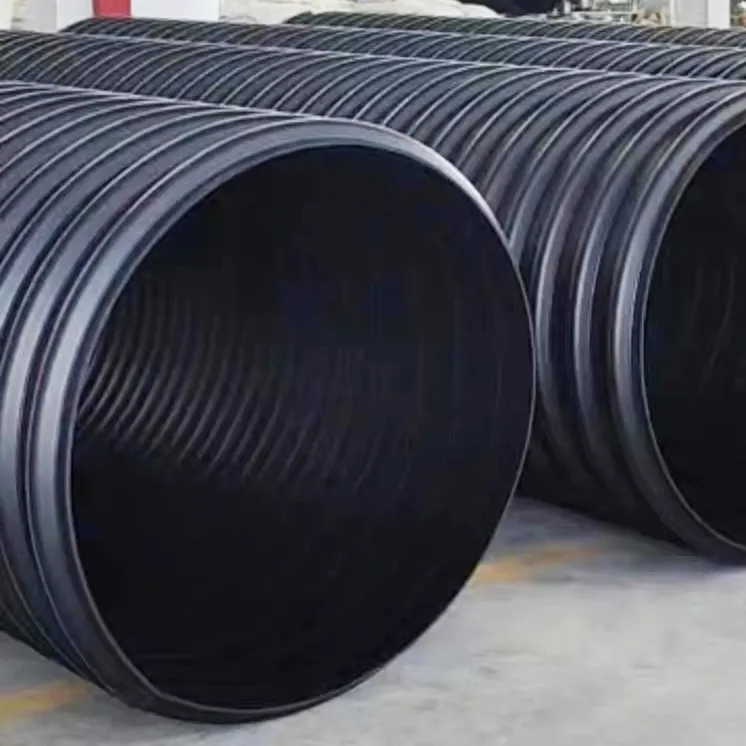PE resin is polymerized from the monomer ethylene. Due to the different polymerization reaction conditions such as pressure and temperature during polymerization, resins of different densities can be obtained, so there are high-density polyethylene, medium-density polyethylene and low-density polyethylene. points. When processing different types of PE pipes, according to their application conditions, different resin grades are selected, and the requirements for extruders and molds are also different.
Internationally, the materials of polyethylene pipes are divided into five grades: PE32, PE40, PE63, PE80, and PE100, while the materials used for gas pipes and water supply pipes are mainly PE80 and PE100. There is no classification of special materials for polyethylene pipes in my country, which makes it difficult for domestic polyethylene gas pipe and water supply pipe manufacturers to choose raw materials, and also brings a lot of hidden dangers to the use of polyethylene pipes.
Therefore, the National Bureau of Standards has made a lot of revisions in the new standard GB/T13663-2018, which stipulates that different grades of PE80 and PE100 for water supply pipes correspond to different pressure strengths, and removes the tensile strength performance in the old standard, and increases the fracture. Elongation (greater than 350%), which emphasizes basic toughness.
Selection of water supply pipes
The water supply pipe must bear a certain pressure, and usually PE resin with large molecular weight and good mechanical properties, such as HDPE resin, should be selected. LDPE resin has low tensile strength, resistance to pressure difference, poor rigidity, poor dimensional stability during molding and difficult connection, and is not suitable as a material for water supply pressure pipes. However, due to its high hygienic index, LDPE, especially LLDPE resin, has become a common material for the production of drinking water pipes. LDPE and LLDPE resins have low melt viscosity, good fluidity and easy processing, so the selection range of their melt index is also wide, usually MI is between 0.3-3g/10min.
A good pipeline should not only have good economy, but also have a series of advantages such as stable and reliable interface, material impact resistance, crack resistance, aging resistance, corrosion resistance, etc. Compared with traditional pipes, HDPE pipe has the following advantages:
⑴ Reliable connection
The polyethylene piping systems are connected by electrothermal fusion, and the strength of the joint is higher than that of the pipe body.
⑵ Good low temperature impact resistance
The low temperature embrittlement temperature of polyethylene is extremely low, and it can be used safely in the temperature range of -60-60 °C. During construction in winter, due to the good impact resistance of the material, the pipe will not be brittle.
⑶ good resistance to stress cracking
HDPE has low notch sensitivity, high shear strength and excellent scratch resistance, and its resistance to environmental stress cracking is also outstanding.
⑷ Good chemical corrosion resistance
HDPE pipes are resistant to corrosion by various chemical media, and the chemicals present in the soil will not cause any degradation to the pipes. Polyethylene is an electrical insulator, so it does not rot, rust or electrochemically corrode; it also does not promote algae, bacterial or fungal growth.
⑸Aging resistance, long service life
Polyethylene pipes containing 2-2.5% evenly distributed carbon black can be stored or used outdoors for 50 years without being damaged by UV radiation.
⑹ Good wear resistance
The wear resistance comparison test of HDPE pipe and steel pipe shows that the wear resistance of HDPE pipe is 4 times that of steel pipe. In the field of mud transportation, compared with steel pipes, HDPE pipes have better wear resistance, which means that HDPE pipes have longer service life and better economy.
⑺ Good flexibility
The flexibility of the HDPE pipe makes it easy to bend, and the engineering can bypass obstacles by changing the direction of the pipe. In many cases, the flexibility of the pipe can reduce the amount of pipe fittings and installation costs.
⑻ Water flow resistance is small
HDPE pipe has a smooth inner surface with a Manning coefficient of 0.009. The smooth performance and non-adhesive properties ensure that the HDPE pipe has a higher conveying capacity than traditional pipes, and also reduces the pressure loss of the pipeline and the energy consumption of water conveying.
⑼ Easy to carry
HDPE pipes are lighter than concrete pipes, galvanized pipes and steel pipes, it is easy to handle and install, and the lower manpower and equipment requirements mean that the installation cost of the project is greatly reduced.
⑽ Various new construction methods
HDPE pipelines have a variety of construction techniques. In addition to traditional excavation methods, various new trenchless techniques such as pipe jacking, directional drilling, lining pipes, and split pipes can be used for construction. For some places where excavation is not allowed, it is the only choice, so the application field of HDPE pipes is more extensive.
How to distinguish between HDPE water supply pipe and HDPE drainage pipe?

We know that PE water supply pipe and PE drainage pipe are difficult to distinguish which is water supply pipe and which is drainage pipe, so how to distinguish PE water supply pipe and PE drainage pipe in our daily procurement?
First of all, from the price point of view, PE water supply pipe uses a new high-density polyethylene material, and the production cost is relatively higher than that of PE drainage pipe. Therefore, the price of PE water supply pipe is higher than that of PE drainage pipe of the same specification.
Secondly, from the point of view of materials, PE water supply pipes transport tap water for people's daily life, so PE water supply pipes must meet the highest hygiene standards, and the production raw materials of PE water supply pipes must also use new high-quality products that meet national standards. Density polyethylene material, only in this way can ensure the safety and hygiene of water quality during transportation. PE drainage pipe is mainly used to discharge sewage, so the requirements will be lower. If the pipe material is allowed by the customer, a certain proportion of return material can be appropriately added to the PE drainage pipe for production, which does not affect the use.
In addition, PE water supply pipes and PE drainage pipes can be distinguished from the pressure level;
PE water supply pipes are used to transport tap water. Due to the needs of safe transportation, the pressure level of the pipes is relatively strict. The pressure levels of PE water supply pipes can generally be divided into 0.6Mpa, 0.8Mpa, 1.0Mpa, 1.25Mpa, 1.6Mpa, five Different grades can withstand 6kg pressure, 8kg pressure, 10kg pressure, 12.5kg pressure and 16kg pressure. The PE drainage pipe is mainly used to discharge sewage, and the pressure to be endured during the discharge process of the pipe is lower, so the sewage pipe generally chooses a lower pressure level, which will not affect the use effect of the pipe.
Therefore, PE water supply pipes are higher than PE drainage pipes in terms of price, material and pressure level. When choosing, they can be selected according to different needs and different uses.



981.webp)

 (1)379.webp)

294.webp)
476.webp)
420.webp)
146.webp)
460.webp)
287.webp)
274.webp)
688.webp)


